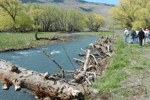 |
Catherine Creek
The collaboration among fish managers and farmers improve habitat for ESA-listed fish, while continuing to serve agricultural uses. The multi-year project to restore roughly four miles of stream is in its fourth and final phase this summer on the former Southern Cross Ranch.
|
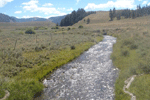 |
Pole Creek
In 2015, the Custer Soil and Water Conservation District and numerous partners completed a multi-year project to add another 17 cubic feet per second of flow to this important tributary.
|
|

|
Fire Science Workshop
The Columbia Basin Federal Caucus and Ecotrust hosted a Fire Science Workshop in Portland on May 13th, 2015, bringing aquatic scientists, fish biologists and fire fighters together to examine wildfire effects on fish habitat.
|
.jpg?sfvrsn=2) |
Chum Spawning Channel
Lower Columbia Fish Enhancement Board and Washington State join forces to improve a spawning channel for chum salmon.
|
|
.jpg?sfvrsn=2)
|
Oxbow Case Study
The Confederated Tribes of the Warm Springs Indian Reservation purchased the 1,022 acre Oxbow conservation area, including over 6 stream miles of important salmon and steelhead spawning habitat, in 2001. Since then, tribes and federal partners have completed three phases of this multi-year project to restore a former mining site.
|
|
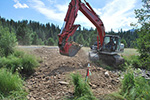
|
Oxbow 2012
Crews restored a former mining site to more natural conditions in the Upper Middle Fork John Day in phase two of the Oxbow conservation project.
|
|
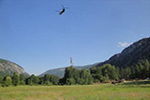
|
Tyee Restoration
Breaching levees at Tyee Ranch in the Entiat River opens up natural floodplain for salmon to spawn.
|
|
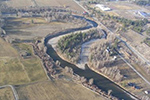
|
Whitefish Island 2012
Scientists work together to increase habitat diversity and channel complexity on Whitefish Island in Washington's Methow River.
|
|
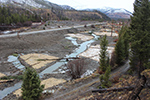
|
Yankee Fork 2012
The pond rehabilitation project in Idaho's Yankee Fork restores former dredge mining site to more natural conditions, providing year-round habitat for salmon, steelhead and bull trout.
|
|
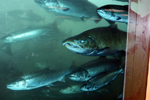
|
Welcome home salmon event
Tribal, state and federal leaders and river users celebrate the collaboration that has helped significantly boost the number of salmon returning to Northwest rivers and streams.
|
|
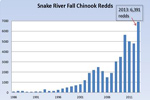
|
Fall Chinook 2014
An abundant wild fall chinook population in Washington’s Hanford Reach and a growing number of wild fish that started with a hatchery program in the Snake River are both setting records again.
|
|
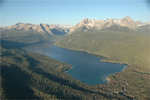
|
Snake River Sockeye
A scientifically managed hatchery strategy has brought Snake River sockeye from the brink of extinction to spawning in the wild.
|
|
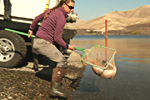
|
Kelt Reconditioning
Tribal biologists released nearly 60 reconditioned steelhead (called kelt) to spawn a second time. Kelt reconditioning is a tool in the FCRPS BiOp to increase the number of viable females on the spawning grounds.
|
|
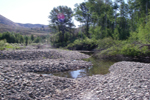
|
Methow side channels
Pools and channels that get disconnected from the main river during low flows can still provide good for young fish. When spring rains reconnect the pools, the fish are washed out to sea.
|
|
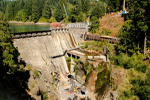
|
Condit Dam Redds
U.S. Geological Survey surveys the two years (2012 and 2013) following Condit Dam's removal ESA-listed Chinook salmon redds in the three miles above the dam's former location.
|
|
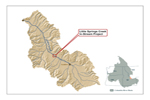
|
Little Springs Creek
With the active collaboration of farmer and ranchers, state and federal biologists, habitat restoration in Idaho's Little Spring has opened year-round access to 180 kilometers of fish habitat and seasonal access to another 103 km.
|
|
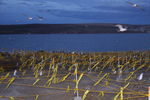
|
Inland avian predation
The first phase of a five-year plan to reduce caspian tern predation on ESA-listed steelhead in the Mid-Columbia includes measures to deter the birds from nesting on Goose Island and Crescent Island.
|
|
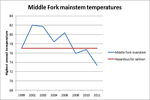
|
John Day temperatures
Fish die-offs from high summer water temperatures have been less frequent in the Middle Fork of the John Day River since rehabilitation projects have restored deeper channels and riparian vegetation.
|
|
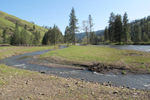
|
ISRP Tour
Join the Independent Scientific Review Board as its members tour the region to review the progress and findings at habitat restoration sites in the Columbia River Basin.
|